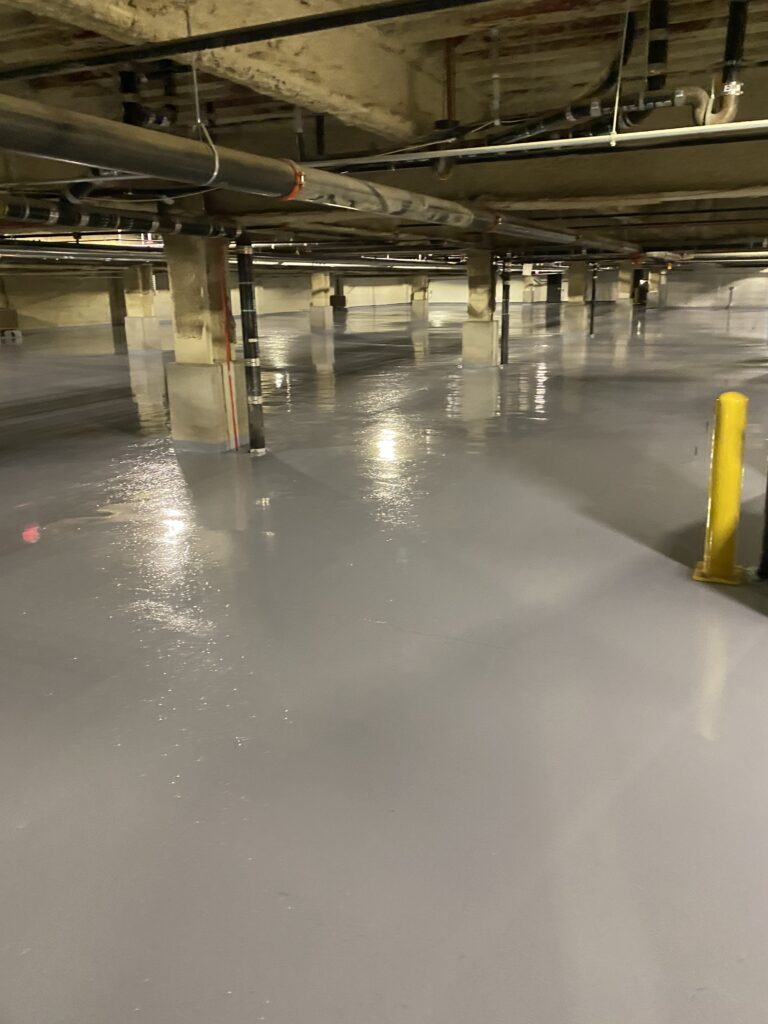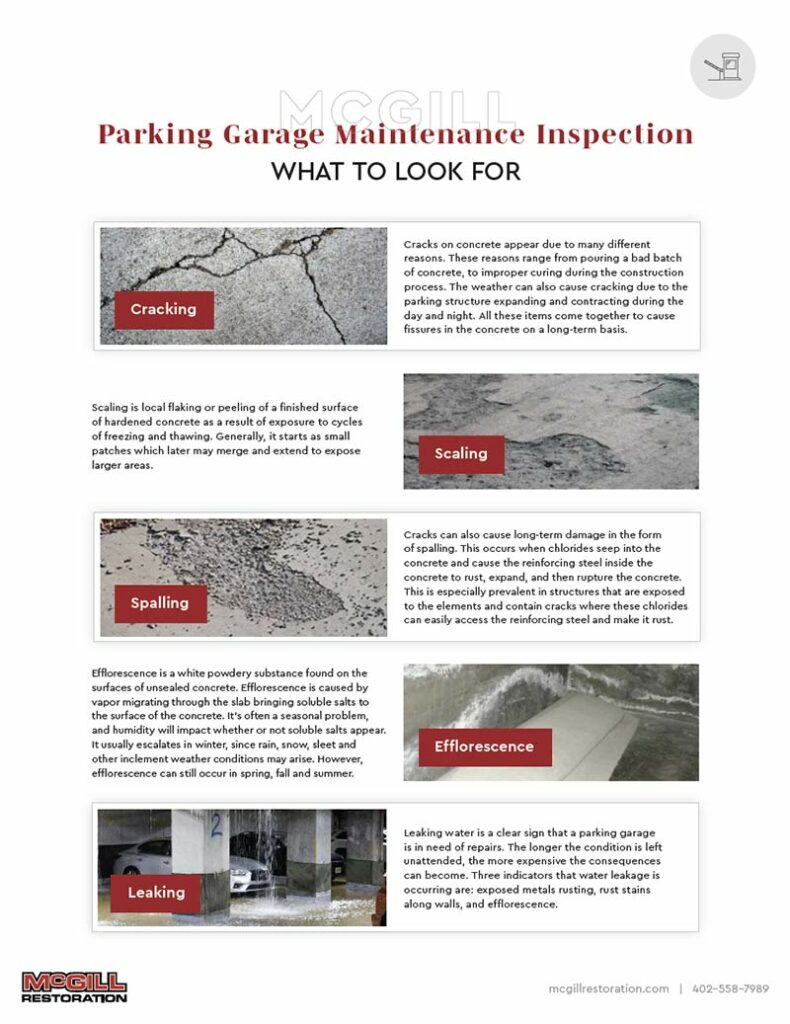Table of Contents
Traffic coatings are a useful tool for preventative maintenance on busy surfaces. As the first line of defense against the elements and physical contact, coatings serve a critical role in protecting against damage and deterioration to high-traffic pedestrian and vehicle contact surfaces.
Various coatings offer robust applications with traffic slip resistance, aesthetic appeal and intensive waterproofing. From an engineering perspective, coatings are valued for their ability to prevent premature deterioration and wear while increasing the longevity of road surfaces, pedestrian areas and vertical construction.
Understanding the Pros and Cons of Traffic Coatings
The major upside to utilizing traffic coatings is the protection of underlying materials and ability to negate physical damage. It’s always worth exploring traffic coatings in-depth to determine if an application is right for your project.
When examining traffic coatings, ask these simple questions to get started:
- What are you trying to accomplish?
- What is the substrate material?
- What is the surface condition currently?
- What is the exposure?
In terms of outcomes, durability is often a top priority. Slip resistance, waterproofing and appearance are also frequent causes for implementing a coating. The substrate material and general condition will also influence the coating selection and the ability to actually deliver protection. Too much wear and deterioration on a surface will benefit from resurfacing or patching before the installation of traffic coatings.
Lastly, the exposure determines the necessary robustness of traffic coating systems. Pedestrian-only surfaces can benefit from a light pedestrian traffic coating while high-traffic vehicle contact and heavy equipment exposure will call for a heavier application.
The general benefits of implementing traffic coatings are:
- Protection of substrate (building materials)
- Reduced surface repair costs
- Sustainability of the road surface
- Extended warranty offered for coatings (5 years)
While the few cons include:
- Upfront costs for material and application
- Difficulty finding certified contractors
- Potential to choose the wrong coating
Most engineers agree that the pros outweigh the cons. Upfront costs are often an issue but when traffic coatings are selected and applied by experienced and certified contractors, the long-term protection and return on investment are advantageous.
Types of Traffic Coatings
Traffic surfaces vary in material construction and traffic types. The appropriate traffic coating type is determined based on these factors. In order from lightest to most intensive in application and protection, you will encounter penetrating sealers, cementitious coatings, urethane coatings, and heavy-duty epoxy overlays.
Penetrating Sealers
Light penetrating sealers are excellent for vertical structure applications but also for light horizontal traffic surfaces. They are the most cost-effective at less than $2/square foot and are excellent for masonry and cement-based structures. Penetrating sealers are breathable so no vapor lock is experienced but they still provide a layer of waterproofing.
As the lightest application, penetrating sealers are not designed for high-traffic, horizontal surfaces and they will not provide slip resistance. They do however fend off chemical contact that rapidly deteriorates masonry and concrete structures.
Cementitious
Designed for higher-traffic areas, this application is cement-based and waterproofing and chemical resistance are two of the major benefits for vertical and horizontal surfaces. It offers a low VOC which is less odorous on application. The breathable properties prevent vapor lock and the application options are wide. It works very well for vinyl, wood, cement, masonry, pool decks, marble, and more. The three- to five-year lifespan is attractive and the only downside is a lack of elasticity. Surfaces with high flex will benefit from a more elastic coating that will not delaminate or debond on flexible surfaces where structural movement is anticipated.
Urethane – Integrated Top Coat
Urethane top coatings are the most popular traffic coatings designed for high-traffic, horizontal applications. They work equally well in occupied or unoccupied spaces and are common on elevated parking structures or over top of occupied spaces. Urethane provides excellent waterproofing alongside minor chemical resistance. The concrete and rebar receive significant protection, extending the overall lifespan.
Flexibility and UV stability make urethane very durable in a variety of environments. Aesthetically, it will maintain color and as an integrated topcoat, installation is less labor-intensive while providing a fully encapsulated, evenly distributed aggregate. Slip resistance is an attractive property for elevated parking structures as well.
Note: Not all urethanes are integrated topcoats. The option is specific to traffic coatings.
Urethane coatings do require annual maintenance, especially after contact with snowplows and heavy equipment. Overall, the coating has few cons and offers an effective means of protecting high-traffic surfaces.
Durable Epoxy Coatings
The highest level of durability and protection offered comes in the form of epoxy. Urethane remains more popular but epoxy offers custom mixtures and aggregates available for utilization across a wider range of surface types. The ability to customize and increase slip resistance and add bigger aggregates makes epoxy unique.
Epoxy can withstand high levels of traffic and abuse, making it a great solution for parking garages, pavement parking, DOT applications and warehouse floors. The material is breathable, preventing vapor lock and it looks great aesthetically. The application is rigid and is best used on low-flex surfaces.
McGill Restoration offers a variety of specialized traffic coatings, each selected and applied by certified professionals. Our experience in traffic coatings and masonry project restoration is second to none.
Read more: High Friction Surface Treatments Keep Drivers Safe
Learn more
For coating-specific projects, read the case studies for the Brandeis Parking Garage and Eagle Parking Garage. Both used coatings to protect garage decking in large-scale parking garage restoration projects.
For a free estimate or more information, reach out online, follow us on social, or call (402) 558-7989.
Pedestrian traffic coatings are any surfaces that can be walked on such as walkways, footbridges. Pedestrian traffic coatings serve a critical role in protecting against damage and deterioration to high-traffic pedestrian and vehicle contact surfaces.
Pedestrian-only surfaces can benefit from a light coating while high-traffic vehicle contact and heavy equipment exposure will call for a heavier application.
Traffic coatings are a useful tool for preventative maintenance on busy surfaces. As the first line of defense against the elements and physical contact, coatings serve a critical role in protecting against damage and deterioration. It is best to use traffic coating as a precaution for possible events such as heavy rains that can cause water damage.



